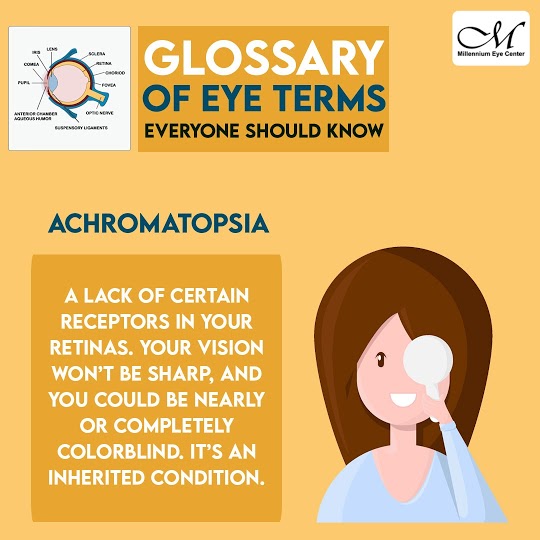Achromatopsia is a condition characterized by a lack of certain receptors in your retinas. This condition reduces your vision sharpeness, and you could be nearly or completely color blind.
Frequency
Achromatopsia affects an estimated 1 in 30,000 people worldwide. Complete achromatopsia is more common than incomplete achromatopsia.
Complete achromatopsia occurs frequently among Pingelapese islanders, who live on one of the Eastern Caroline Islands of Micronesia. Between 4 and 10 percent of people in this population have a total absence of color vision.
Causes
According to Medlineplus.gov, Achromatopsia results from changes in one of several genes: CNGA3, CNGB3, GNAT2, PDE6C, or PDE6H. A particular CNGB3 gene mutation underlies the condition in Pingelapese islanders.
Achromatopsia is a disorder of the retina, which is the light-sensitive tissue at the back of the eye. The retina contains two types of light receptor cells, called rods and cones. These cells transmit visual signals from the eye to the brain through a process called phototransduction. Rods provide vision in low light (night vision). Cones provide vision in bright light (daylight vision), including color vision.
Mutations in any of the genes listed above prevent cones from reacting appropriately to light, which interferes with phototransduction. In people with complete achromatopsia, cones are nonfunctional, and vision depends entirely on the activity of rods. The loss of cone function leads to a total lack of color vision and causes the other vision problems. People with incomplete achromatopsia retain some cone function. These individuals have limited color vision, and their other vision problems tend to be less severe.
Some people with achromatopsia do not have identified mutations in any of the known genes. In these individuals, the cause of the disorder is unknown. Other genetic factors that have not been identified likely contribute to this condition.
This condition is inherited in an autosomal recessive pattern, which means both copies of the gene in each cell have mutations. The parents of an individual with an autosomal recessive condition each carry one copy of the mutated gene, but they typically do not show signs and symptoms of the condition.
Our top priority is your lifelong healthy vision!
For any question about your eye health, please call us at 407-292-9812.
The content on this blog is not intended to be a substitute for professional medical advice, diagnosis, or treatment. Always seek the advice of qualified health providers with questions you may have regarding medical conditions.

